GrabCAD
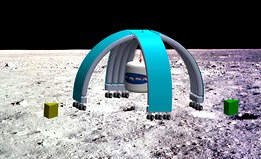
ALLGO, Inflatable Moon Crane (IMC), 16 42 inch inflatable tubes
by GrabCAD
Last crawled date: 1 year, 11 months ago
Inflatable Moon Crane (IMC) that can lift the highest loads (11000kg) with the biggest diameters (8 meter). With 2 meter headspace under the load! Structurally sound, all forces are calculated and accounted for!
This is my design it can be packed in the smallest NASA module designed to go to the moon: the 8.4 meter USA.
The capsule also packs 2 big containers, one battery and one air tank with a volume of 9383 liter. If the air tank is pressurized to 250 bar that would come down to 2.345 ML or 2,873 kg of air. All the inflatables need only need 714,061 Liter (or 0.71ML) to fully inflate, so that is some extra air for the crane.
I ran the program (PressArchAnalysis) that was used in the "Feasibility of a Self-Erecting Shelter with an Inflatable-Fabric-ArchSupported Roof and Rigid Walls" file mentioned in the comments by Kevin Kempton. The calculations showed that one 42 inch inflatable arch of 22 meters wide, reinforced with 100mm wide 10mm high straps, could hold 0.8 times the weight of 11 Metric Ton on the moon. So lifting 11 Metric Ton on the moon could be done with 2 arches, but that would be in a static situation. When its moving all sorts of dynamic forces would also act on the inflatables. And id better fill up as much cargo capacity as i can because wasting space is a real big shame when it costs so much to lift things into space, especially when i has to go to the moon. So 16 beams in total. That should hold itself. 8300 lb/in was used as fabric strength in the calculations with the program.
Also the 8 meter diameter as mentioned in this link: https://www.herox.com/LunarDelivery , was something i wanted to design around. So using all the cargo space (on the floor) wasnt such a bad idea.
The arches are tied with cables so there wont be any forces trying to push the arches outwards. That is a big concern when using arches, so that is why i think my design is pretty solid. There are 2 tie arches that go on both sides of the wheels, that way the wheels wont be pulled inward or outward. Ensuring the crane will stay on its feet.
There is a platform with a crane in the middle of the arches. The arches are connected to the carts and platform through the use of bulkheads and clevises. "Review of Habitable Softgoods Inflatable Design, Analysis, Testings, and Potential Space Applications, page 8."
The crane can move 1.8 meter to each side by a trolley on a track. 3.6 meter total movement. It is based on a tower crane. So it should have enough lifting capacity. The hoist is in the top of the IMC, and not at the bottom, so you dont have to put two times the load on the structure. One load, the load, and one load, the pull, that makes twice the load on a structure. That is why tower cranes have the hoist on top, and not at the bottom of the crane.
The communications is in the GHz range, ive seen NASA uses 3.380GHz, 7.185GHz, 14.295GHz, 21.395GHz, and 28.65GHz. With that small a wavelength that makes using a dipole as antenna to small and antenna, that is why there is an antenna array on every corner of the IMC. Also i added a dish antenna on top of the IMC. Its calculated that with the 1.5 feet it has, there is a 22.75dBi amprification, and 12.09 degree 3- dB beam angle. "ARRL satellite antenna handbook, page 10-18". I was inspired by the first moon lander and rover its dish antenna. The larger the dish the smaller the beam angle. So a dish array could be something to look for if there is a station set up on the moon.
The bladder of the inflatable is urethane coated nylon fiber "Review of Habitable Softgoods Inflatable Design, Analysis, Testings, and Potential Space Applications, page 8". The outer layer is Vectran, coated in urethane (unlike what is mentioned in the literature) . It is believed that the lunar dust can cause abrasion in between the fibers and can cause failure of the Vectran membrane, or cause a leak of the bladder. The inflatable members are kept at 49psi (25% ultimate tensile strength as mentioned in the literature provided). The restraint layer is the MMOD layer.
The wheels have a deployed and undeployed state, it saves in cargo space and gives extra height for under the IMCs crane. The moving element is protected by a sleeve. It is believed that if you can have an inflatable crane on the moon, you can have a sleeve around the suspension. There was no other good option for a suspension that could coupe with the 25cm and still would be able to lift the heavy loads. Even though it is said in the description hydraulics are a no no. There are 12 couples of wheels, so 24 wheels in total.
There are solar panels on the roof of the IMC, and there are deployable solar panel fabric solar panels on the sides of the IMC. In the undeployed state they are rolled up on top of the IMC, in the deployed state they are brought in position by reels on the carts (yes, some names where used wrongly on the parts, but he the IMC is there).
There is a winged door on the bottom of every cart that holds a connection for the IMC to connect to an external battery. The carts hold extra batteries and extra compressed air for the inflatable arches.
The top of the crane and the carts have whipple shields as an MMOD protection layer to protect them from high velocity debris.
The inflatable members are folded double and rolled up like a flattened candy roll. "Review of Inflatable Booms for Deployable Space Structures Packing and Rigidization, page 4".
There is a hatch that you can open under the carts that holds the connector for the battery.
The cables are placed in the buckets designed for them, so they can deploy without intertwining and being thrown all over the capsule during launch.
The weight, well i cannot say much about the weight of the rest of the structure, because the parts are not designed for the forces they need to handle. But the inflatables will weigh between 168 to 335 pounds each (a 558.43 sq ft surface area). So 134 to 268 cubic feet in total. ("the inflatable material was about 0.3 to 0.6 pounds per square foot of surface area and when tightly packaged for shipping the density was about 20 pounds per cubic foot."). With 489.34 cu ft on each side of the carts left, there should be enough space to fit the 4 x 16.75(cu ft per inflatable packed)= 67 cubic feet per side. So the cargo should fit with 3657 cubic feet left to spare in the capsules cone. So that should leave some room for extra attributes if the weight of the launcher permits it.
Some calculations (For all calculations see the pictures, the entire crane has been statically checked with math. It will stay up): lets say the load on the crane is 11000kg, and the crane and roof weighs 2000kg. ((11000+2000)*1.62)= 21060 Newton, 21060/8=2632.5N. 8 symmetrical pieces seen from the top of the crane. 2418.35/2907.89=0.8317. Distances from the inner and outer legs to the middle of the crane, seen from the top. 2632.5*(1/(1+0.8317))=1437.23N for the inner leg. 2632.5*(1/(1+0.8317))=1195.27N for the outer leg. 1195.27+1437.23=2632.5N (so that should be enough proof that its the load divided right for the legs). The loads on earth would have a weight of 1437.23*9.81=146.51kg, and 1195.27*9.81=121.84kg on earth for the inner and outer arches. So if tested on earth only load with (146.51+121.84)*8= 2146.8kg. The heaviest loading possible for an arch with an asymmetrical loading caused by the crane to move 1.8 meter is 2646.45N, or 269.77kg on earth, when loaded with 13 tons on the moon. The maximum forces on the wheels (due to the cranes out of center position) are 3807.34N.
The IMCs brakes need to be on when the crane has an asymmetrical load, otherwise it will start moving into the direction of the load. If the brakes opposite of the load brake the load will be applied to those arches, if they both brake the load is divided over the arches, if the side of the load brakes the arches on that side will carry an extra load. Some thought in making the outer layer should be given, while the asymmetrical loading may give some extra strain sides of the arches. This could be done by putting in some extra heavy wires in the vectran fabric.
All in all i believe the IMC (Inflatable Moon Crane), is the best answer to the question: how would NASA pack the biggest crane in the smallest NASA moon capsule as possible.
Also: When not in use its big solar arrays can produce a lot of electricity. The big battery capacity will ensure long service time before needing a recharge. The rig can be used for heavy mining operations in the future too!
I added some inspiration pictures that really helped me to design this IMC gantry crane.
Design is uploaded in IGES (its STEP now, while that did seem to work) for the final assembly and the payload assembly.
If there are any questions about my design, email!
Greetings,
A B
p.s.
If people want i can provide all the parts and assemblies. Do leave a comment! I like criticism! The STEP files show a really clear picture. I can actually say im proud of this design! This thing can lift tons!!
This is my design it can be packed in the smallest NASA module designed to go to the moon: the 8.4 meter USA.
The capsule also packs 2 big containers, one battery and one air tank with a volume of 9383 liter. If the air tank is pressurized to 250 bar that would come down to 2.345 ML or 2,873 kg of air. All the inflatables need only need 714,061 Liter (or 0.71ML) to fully inflate, so that is some extra air for the crane.
I ran the program (PressArchAnalysis) that was used in the "Feasibility of a Self-Erecting Shelter with an Inflatable-Fabric-ArchSupported Roof and Rigid Walls" file mentioned in the comments by Kevin Kempton. The calculations showed that one 42 inch inflatable arch of 22 meters wide, reinforced with 100mm wide 10mm high straps, could hold 0.8 times the weight of 11 Metric Ton on the moon. So lifting 11 Metric Ton on the moon could be done with 2 arches, but that would be in a static situation. When its moving all sorts of dynamic forces would also act on the inflatables. And id better fill up as much cargo capacity as i can because wasting space is a real big shame when it costs so much to lift things into space, especially when i has to go to the moon. So 16 beams in total. That should hold itself. 8300 lb/in was used as fabric strength in the calculations with the program.
Also the 8 meter diameter as mentioned in this link: https://www.herox.com/LunarDelivery , was something i wanted to design around. So using all the cargo space (on the floor) wasnt such a bad idea.
The arches are tied with cables so there wont be any forces trying to push the arches outwards. That is a big concern when using arches, so that is why i think my design is pretty solid. There are 2 tie arches that go on both sides of the wheels, that way the wheels wont be pulled inward or outward. Ensuring the crane will stay on its feet.
There is a platform with a crane in the middle of the arches. The arches are connected to the carts and platform through the use of bulkheads and clevises. "Review of Habitable Softgoods Inflatable Design, Analysis, Testings, and Potential Space Applications, page 8."
The crane can move 1.8 meter to each side by a trolley on a track. 3.6 meter total movement. It is based on a tower crane. So it should have enough lifting capacity. The hoist is in the top of the IMC, and not at the bottom, so you dont have to put two times the load on the structure. One load, the load, and one load, the pull, that makes twice the load on a structure. That is why tower cranes have the hoist on top, and not at the bottom of the crane.
The communications is in the GHz range, ive seen NASA uses 3.380GHz, 7.185GHz, 14.295GHz, 21.395GHz, and 28.65GHz. With that small a wavelength that makes using a dipole as antenna to small and antenna, that is why there is an antenna array on every corner of the IMC. Also i added a dish antenna on top of the IMC. Its calculated that with the 1.5 feet it has, there is a 22.75dBi amprification, and 12.09 degree 3- dB beam angle. "ARRL satellite antenna handbook, page 10-18". I was inspired by the first moon lander and rover its dish antenna. The larger the dish the smaller the beam angle. So a dish array could be something to look for if there is a station set up on the moon.
The bladder of the inflatable is urethane coated nylon fiber "Review of Habitable Softgoods Inflatable Design, Analysis, Testings, and Potential Space Applications, page 8". The outer layer is Vectran, coated in urethane (unlike what is mentioned in the literature) . It is believed that the lunar dust can cause abrasion in between the fibers and can cause failure of the Vectran membrane, or cause a leak of the bladder. The inflatable members are kept at 49psi (25% ultimate tensile strength as mentioned in the literature provided). The restraint layer is the MMOD layer.
The wheels have a deployed and undeployed state, it saves in cargo space and gives extra height for under the IMCs crane. The moving element is protected by a sleeve. It is believed that if you can have an inflatable crane on the moon, you can have a sleeve around the suspension. There was no other good option for a suspension that could coupe with the 25cm and still would be able to lift the heavy loads. Even though it is said in the description hydraulics are a no no. There are 12 couples of wheels, so 24 wheels in total.
There are solar panels on the roof of the IMC, and there are deployable solar panel fabric solar panels on the sides of the IMC. In the undeployed state they are rolled up on top of the IMC, in the deployed state they are brought in position by reels on the carts (yes, some names where used wrongly on the parts, but he the IMC is there).
There is a winged door on the bottom of every cart that holds a connection for the IMC to connect to an external battery. The carts hold extra batteries and extra compressed air for the inflatable arches.
The top of the crane and the carts have whipple shields as an MMOD protection layer to protect them from high velocity debris.
The inflatable members are folded double and rolled up like a flattened candy roll. "Review of Inflatable Booms for Deployable Space Structures Packing and Rigidization, page 4".
There is a hatch that you can open under the carts that holds the connector for the battery.
The cables are placed in the buckets designed for them, so they can deploy without intertwining and being thrown all over the capsule during launch.
The weight, well i cannot say much about the weight of the rest of the structure, because the parts are not designed for the forces they need to handle. But the inflatables will weigh between 168 to 335 pounds each (a 558.43 sq ft surface area). So 134 to 268 cubic feet in total. ("the inflatable material was about 0.3 to 0.6 pounds per square foot of surface area and when tightly packaged for shipping the density was about 20 pounds per cubic foot."). With 489.34 cu ft on each side of the carts left, there should be enough space to fit the 4 x 16.75(cu ft per inflatable packed)= 67 cubic feet per side. So the cargo should fit with 3657 cubic feet left to spare in the capsules cone. So that should leave some room for extra attributes if the weight of the launcher permits it.
Some calculations (For all calculations see the pictures, the entire crane has been statically checked with math. It will stay up): lets say the load on the crane is 11000kg, and the crane and roof weighs 2000kg. ((11000+2000)*1.62)= 21060 Newton, 21060/8=2632.5N. 8 symmetrical pieces seen from the top of the crane. 2418.35/2907.89=0.8317. Distances from the inner and outer legs to the middle of the crane, seen from the top. 2632.5*(1/(1+0.8317))=1437.23N for the inner leg. 2632.5*(1/(1+0.8317))=1195.27N for the outer leg. 1195.27+1437.23=2632.5N (so that should be enough proof that its the load divided right for the legs). The loads on earth would have a weight of 1437.23*9.81=146.51kg, and 1195.27*9.81=121.84kg on earth for the inner and outer arches. So if tested on earth only load with (146.51+121.84)*8= 2146.8kg. The heaviest loading possible for an arch with an asymmetrical loading caused by the crane to move 1.8 meter is 2646.45N, or 269.77kg on earth, when loaded with 13 tons on the moon. The maximum forces on the wheels (due to the cranes out of center position) are 3807.34N.
The IMCs brakes need to be on when the crane has an asymmetrical load, otherwise it will start moving into the direction of the load. If the brakes opposite of the load brake the load will be applied to those arches, if they both brake the load is divided over the arches, if the side of the load brakes the arches on that side will carry an extra load. Some thought in making the outer layer should be given, while the asymmetrical loading may give some extra strain sides of the arches. This could be done by putting in some extra heavy wires in the vectran fabric.
All in all i believe the IMC (Inflatable Moon Crane), is the best answer to the question: how would NASA pack the biggest crane in the smallest NASA moon capsule as possible.
Also: When not in use its big solar arrays can produce a lot of electricity. The big battery capacity will ensure long service time before needing a recharge. The rig can be used for heavy mining operations in the future too!
I added some inspiration pictures that really helped me to design this IMC gantry crane.
Design is uploaded in IGES (its STEP now, while that did seem to work) for the final assembly and the payload assembly.
If there are any questions about my design, email!
Greetings,
A B
p.s.
If people want i can provide all the parts and assemblies. Do leave a comment! I like criticism! The STEP files show a really clear picture. I can actually say im proud of this design! This thing can lift tons!!
Similar models
thingiverse
free

G scale arch by dagnall53
...id not get all the "bricks" perfectly, but it looks good when painted with sandstone type paints. feel free to modify!
thingiverse
free

Streamlight Stinger Holder
...d print with no supports. if for some reason, it loads misaligned, orient the model so it is right side up. bolt hole to the top.
grabcad
free

Onion Crane (Advanced Light-Weight Lunar Gantry)
...lated.
for more information, please look at drawing/pdf, if you have any question please email me at zealousllc.co@gmail.com
grabcad
free

NASA Challenge crane
...n’t contain brakes, couplings, wires etc. but those parts are needed.
*notice*
all bearing models are downloaded from www.skf.com
grabcad
free

Inflatable Gantry Rover
... calculations are attached justifying the load bearing capabilities. thanks for this challenge, and i look forward to the result!
thingiverse
free

Loading coil for a 160 meter band antenna by PU2GTA
...5mm and 48 turns.
my first test i used 16 meter fishing pole with 12 meter 1.5 wire as element, 2 wires 20 meter each as radial.
grabcad
free

ILG crane (ALLGO)
...).
the provided data and structural analysis and methodologies are explained in detail in the proceeding chapters of this report.
cg_trader
$21

Gantry Crane
...automobile engines out of vehicles. they are also called portal cranes, the portal being the empty space straddled by the gantry.
grabcad
free

box-girder crane with load capacity up to 10 tons on solidworks
...s
grabcad
box-girder crane with load capacity up to 10 tonnes with solidworks da reach 15 meter high and 8.5 meter lifting equal
3dwarehouse
free

Medieval Medium-Load Crane
...d crane
3dwarehouse
just a crane i designed to lift hot oil from the ground to the top of the wall. #crane #medieval #mediumload
Imc
3dfindit
free

IMC-004
...imc-004
3dfind.it
catalog: wmberg
thingiverse
free

Titanfall IMC Logo by Arcanite214
...nite214
thingiverse
prepare for titanfall- the logo of the interstellar manufacturing corporation (imc) from the game titanfall.
thingiverse
free

titanfall 2 IMC logo by lazage
...titanfall 2 imc logo by lazage
thingiverse
this is the logo of the imc in titanfall 2
3d_sky
free

Children Milano factory IMC
...children milano factory imc
3dsky
milano
http://italmebeltorg.ru/c1325/
thingiverse
free
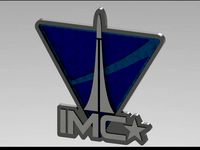
Titanfall IMC by dSASQUATCH707
... the moment this game is one of my favorites to play, i thought why not create something from it. enjoy!
made using solidworks.
thingiverse
free

FRC Vision - IMC Eye
...ye camera 1
xl6009 step up converter 1
5v relay 1
raspberry pi 4 1
raspberry pi 4 cooling case 1
3d printed imc eye case 1
3dfindit
free

C-105 Straps for Rigid Conduit, IMC and Pipe
...c-105 straps for rigid conduit, imc and pipe
3dfind.it
catalog: abb installation products
thingiverse
free
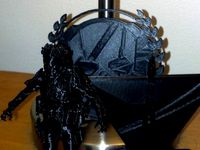
TitanFall IMC Pilot by idolcrasher
...se go check that program out.
i will include both the original version (no support) as well as the meshmixer supported version.
thingiverse
free

IMC Female Helmet by Jace1969
....
please note this was originally uploaded to the net as a free down load. so i cant take credit for whom actually made the file.
thingiverse
free

red dwarf jmc base by Trunkymaj
...red dwarf jmc base by trunkymaj thingiverse a base imc for the...
Allgo
grabcad
free

ALLGO
...allgo
grabcad
an advanced lightweight lunar gantry for operations (allgo)
grabcad
free

ALLGO
...allgo
grabcad
attach file step and detail drawing pdf for allgo
grabcad
free

ALLGO
...allgo
grabcad
nasa challenge: an advanced lightweight lunar gantry for operations (allgo)
grabcad
free

ALLGO Neri
...allgo neri
grabcad
model of the allgo challenge
grabcad
free

ALLGO LUNA
...allgo luna
grabcad
advanced lightweight lunar gantry for operations (allgo)
grabcad
free

ALLGO NASA
...allgo nasa
grabcad
nasa challenge: an advanced lightweight lunar gantry for operations (allgo)
grabcad
free

ALLGO
...s allgo nasa challenge,
i'm currently running inflation simulation of the body on blender.
hope to inspire someone.
good luck
grabcad
free

ALLGO LUNA 4
...allgo luna 4
grabcad
advanced lightweight lunar gantry for operations (allgo)
grabcad
free

ALLGO LUNA 1
...allgo luna 1
grabcad
advanced lightweight lunar gantry for operations (allgo)
grabcad
free

ALLGO Competition
...allgo competition
grabcad
this is my design for the competition
Inflatable
3d_ocean
$25
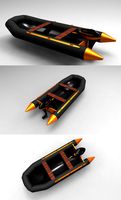
Inflatable boat
...inflatable boat
3docean
boat boat egine inflatable boat water
high poly inflatable boat 33.352 polys
3d_ocean
$25
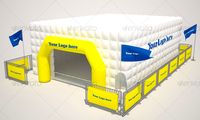
Inflatable Tent Exterior
...table tent
promotional inflatable tent exterior look. it comes with flags. and an inflatable arc. surrounded with metalic fences.
3d_export
$5

shock absorber inflator
...shock absorber inflator
3dexport
shock absorber inflator
3d_export
$13

inflatable castle
... castles have been suggested as having some therapeutic value for children with certain sensory impairments, similar to ball pits
3d_export
$5

inflatable pool toys
...inflatable pool toys
3dexport
inflatable pool toys with mapping
turbosquid
$6

Inflatable Climbing
...d
royalty free 3d model inflatable climbing for download as on turbosquid: 3d models for games, architecture, videos. (1298328)
turbosquid
$129

inflatable pool
...id
royalty free 3d model inflatable pool for download as max on turbosquid: 3d models for games, architecture, videos. (1650023)
turbosquid
$25
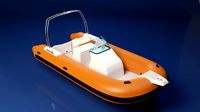
Inflatable boat
...
royalty free 3d model inflatable boat for download as blend on turbosquid: 3d models for games, architecture, videos. (1586932)
turbosquid
$5

Inflatable tent
...id
royalty free 3d model inflatable tent for download as c4d on turbosquid: 3d models for games, architecture, videos. (1622474)
3d_export
$5
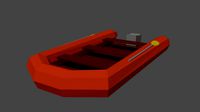
boat inflatable
...boat inflatable
3dexport
Crane
archibase_planet
free
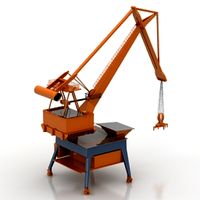
Crane
...rane
archibase planet
crane harbor crane lifting crane port crane
crane 1 - 3d model (*.gsm+*.3ds) for exterior 3d visualization.
archibase_planet
free

Crane
...rane
archibase planet
crane port crane lifting crane harbor crane
crane 4 - 3d model (*.gsm+*.3ds) for exterior 3d visualization.
archibase_planet
free
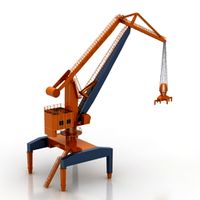
Crane
...rane
archibase planet
crane port crane lifting crane harbor crane
crane 2 - 3d model (*.gsm+*.3ds) for exterior 3d visualization.
archibase_planet
free
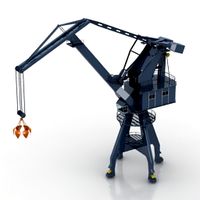
Crane
...rane
archibase planet
crane harbor crane lifting crane port crane
crane 3 - 3d model (*.gsm+*.3ds) for exterior 3d visualization.
archibase_planet
free

Crane
...crane
archibase planet
crane lifting crane hoisting crane
crane mob n080708 - 3d model for interior 3d visualization.
archibase_planet
free
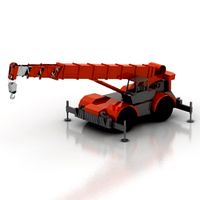
Crane
...e
archibase planet
crane lifting crane hoisting crane
crane n110314 - 3d model (*.gsm+*.3ds+*.max) for exterior 3d visualization.
archibase_planet
free

Crane
...base planet
crane lifting crane hoisting crane gibbet
crane n100713 - 3d model (*.gsm+*.3ds+*.max) for exterior 3d visualization.
3d_export
$29

Crane
...crane
3dexport
a cute crane
3d_ocean
$18
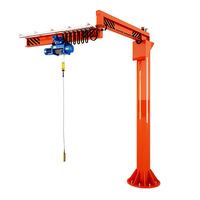
Crane
...crane
3docean
crane lift loader machine work
this is a high poly 3d model crane
archibase_planet
free

Crane
...crane
archibase planet
crane
saddle jib crane cel - 3d model. free download.
42
design_connected
$16

No.42
...no.42
designconnected
great dane no.42 computer generated 3d model. designed by kristiansen, kai.
design_connected
free

42
...42
designconnected
artek 42 free models computer generated 3d model. designed by alvar aalto.
design_connected
$16

Wogg 42
...wogg 42
designconnected
wogg wogg 42 computer generated 3d model. designed by boner, jörg.
3ddd
$1

PLANTS 42
...ants 42
3ddd
цветок , горшок
plants 42,, planters from rh vetro series,, enjoy the model
3d_ocean
$20
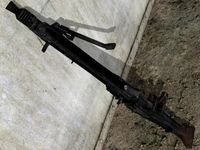
Maschinengewehr 42
...hine maschinengewehr mg mg-42 mg42 pistol ready rifle sniper weapon
low polygon and very well detailed maschinengewehr 42 (mg42).
turbosquid
$10

building 42
...urbosquid
royalty free 3d model building 42 for download as on turbosquid: 3d models for games, architecture, videos. (1362755)
turbosquid
$6

Bedcloth 42
...osquid
royalty free 3d model bedcloth 42 for download as max on turbosquid: 3d models for games, architecture, videos. (1522746)
turbosquid
$50

MG-42
...osquid
royalty free 3d model mg-42 3d model for download as on turbosquid: 3d models for games, architecture, videos. (1555634)
turbosquid
$12
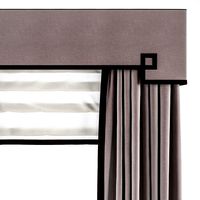
Curtains 42
...royalty free 3d model curtains 42 for download as max and obj on turbosquid: 3d models for games, architecture, videos. (1650289)
turbosquid
$7

RG-42
...quid
royalty free 3d model rg-42 for download as max and obj on turbosquid: 3d models for games, architecture, videos. (1166505)
Moon
3d_export
$10

moon
...moon
3dexport
relief moon
3ddd
$1
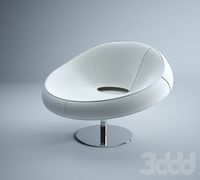
Moon
...moon
3ddd
moon armchair
3ddd
$1
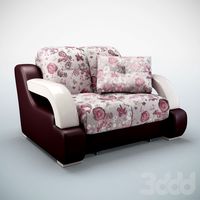
MOON 012
...moon 012
3ddd
moon
moon 012
3ddd
$1

Moon 026
...moon 026
3ddd
moon
диван moon 026
design_connected
$13

Moon
...moon
designconnected
davide groppi moon computer generated 3d model. designed by groppi, davide.
3ddd
$1

Moroso moon
...moroso moon
3ddd
moroso , moon
кресло moroso moon
3ddd
$1
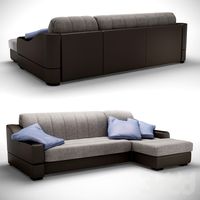
MOON 016
...moon 016
3ddd
moon , угловой
диван moon 016
3ddd
$1
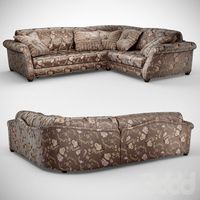
MOON 053
...moon 053
3ddd
moon , угловой
диван moon 053
3d_ocean
$7

MOON
...rth jupiter model moon nasa nature ocean photorealistic planet poly realistic render satellite science solar space system
3d moon
3ddd
$1
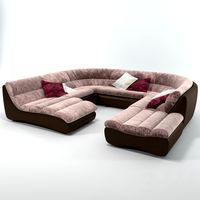
Диван Moon
...диван moon
3ddd
moon , модульный
диван для гостиной. moon
Tubes
archibase_planet
free

Tube
...tube
archibase planet
paint tube stationery
tube - 3d model (*.gsm+*.3ds) for interior 3d visualization.
turbosquid
free

tube
...tube
turbosquid
free 3d model tube for download as c4d on turbosquid: 3d models for games, architecture, videos. (1378271)
archibase_planet
free

Tube
...tube
archibase planet
mascara cosmetics make-up
tube 1 - 3d model (*.gsm+*.3ds) for interior 3d visualization.
3d_export
$5
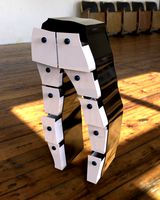
Tube pants
...tube pants
3dexport
tube pants
3d_export
free
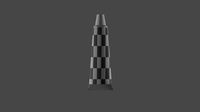
Tube
...tube
3dexport
turbosquid
free
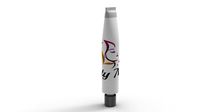
TUBE
...
free 3d model tube for download as blend, dae, fbx, and obj on turbosquid: 3d models for games, architecture, videos. (1672199)
turbosquid
$29

tube
...lty free 3d model tube for download as 3ds, obj, c4d, and fbx on turbosquid: 3d models for games, architecture, videos. (1442047)
3ddd
$1

perfume tube
...perfume tube
3ddd
тюбик
perfume tube, тюбик
3ddd
$1
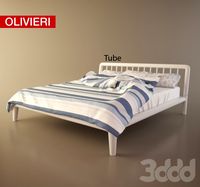
Olivieri Tube
...olivieri tube
3ddd
olivieri
кровать olivieri tube
turbosquid
$22
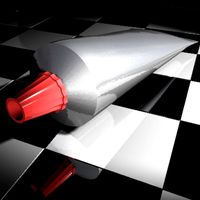
Tube
... available on turbo squid, the world's leading provider of digital 3d models for visualization, films, television, and games.
Inch
3ddd
$1
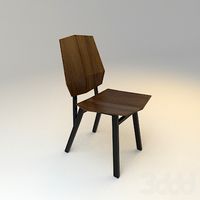
Inch chair
...inch chair
3ddd
inch , vitra
vitra inch chair wood vray
3d_export
$7
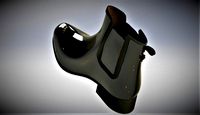
shoes size from 5 inch size to 11 inch
...shoes size from 5 inch size to 11 inch
3dexport
shoes design women model sizing from 5 inch to 11 inch
turbosquid
free
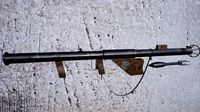
BAZOOKA 236 INCH
...d
royalty free 3d model bazooka 236 inch for download as fbx on turbosquid: 3d models for games, architecture, videos. (1646746)
3ddd
$1
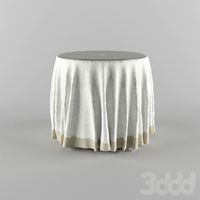
36 Inch Terrific Trio
...36 inch terrific trio
3ddd
круглый , скатерть
нойной столик - 36 inch terrific trio
turbosquid
$10
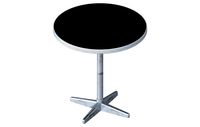
30 inch table
... available on turbo squid, the world's leading provider of digital 3d models for visualization, films, television, and games.
turbosquid
$2

Display 22 inch
... available on turbo squid, the world's leading provider of digital 3d models for visualization, films, television, and games.
3ddd
free
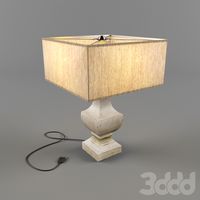
currey 30 inches 6767
...currey 30 inches 6767
3ddd
currey&company
светильник настольный currey and company 6767 greta 30 inch table lamp
3d_export
$6

samsung 85 inch uhd tv
...samsung 85 inch uhd tv
3dexport
samsung 85 inch uhd tv with stand and normal both
turbosquid
$49

Hyde Sofa 88-inch
...
royalty free 3d model hyde sofa 88-inch for download as max on turbosquid: 3d models for games, architecture, videos. (1622670)
turbosquid
$44
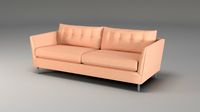
Corwyn Sofa 85-inch
...royalty free 3d model corwyn sofa 85-inch for download as max on turbosquid: 3d models for games, architecture, videos. (1622689)
16
3ddd
$1
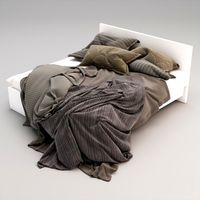
Bed 16
...bed 16
3ddd
постельное белье
bed 16.hope you like it.thanks you very much
design_connected
$4
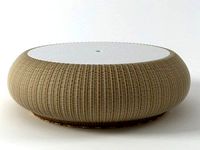
Bolla 16
...bolla 16
designconnected
gervasoni bolla 16 coffee tables computer generated 3d model. designed by michael sodeau.
3d_export
$6

tap-16
...tap-16
3dexport
3d_export
$6

set-16
...set-16
3dexport
3ddd
$1

16 Mobilier ALIXE
... уличная , мебель
производитель: 16 mobilier
модель: alixe
3ddd
$1

Curtains 16
...curtains 16
3ddd
ламбрикен
curtains 16
polys: 350077
other models:http://3ddd.ru/users/brast/models
turbosquid
$199

F-16
...16
turbosquid
royalty free 3d model f-16 for download as max on turbosquid: 3d models for games, architecture, videos. (1188169)
turbosquid
$128
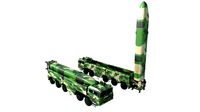
DF-16
...6
turbosquid
royalty free 3d model df-16 for download as max on turbosquid: 3d models for games, architecture, videos. (1660349)
turbosquid
$40

cottage 16
...bosquid
royalty free 3d model cottage 16 for download as max on turbosquid: 3d models for games, architecture, videos. (1377002)
turbosquid
$20

Decor 16
...urbosquid
royalty free 3d model decor 16 for download as stl on turbosquid: 3d models for games, architecture, videos. (1676913)
